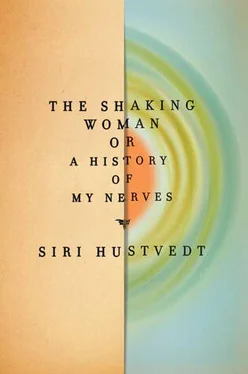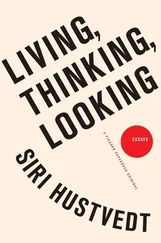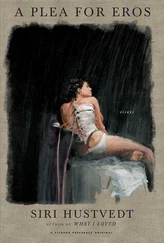153. Ibid., 472.
154. Oliver Sacks, Migraine: Understanding a Common Disorder (Berkeley: University of California Press, 1985), 104.
155. Ibid., 104.
156. Alan B. Ettinger and Andres M. Kanner, Psychiatric Issues in Epilepsy: A Practical Guide to Diagnosis and Treatment, 2nd ed. (Philadelphia: Lippincott, Williams & Wilkens, 2007), 286–88.
157. Schacter, Holmes, and Kasteleijn-Nolst Trenité, Behavioral Aspects of Epilepsy, 210.
158. Steve Connor, “ ‘God Spot’ Is Found in Brain,” Los Angeles Times, Oct. 29, 1997; and “Doubt Cast over Brain God Spot,” BBC News, Aug. 30, 2006. Two studies about religion and the brain resulted in wide media attention. The first, conducted at the University of California, San Diego, in 1997 (by V. S. Ramachandran et al.), was done on people with temporal lobe epilepsy, people who admitted to being highly religious, and normal controls. The scientists tested their subjects’ galvanic skin response (GSR) and found strong emotional responses to spiritual words in the epileptics and the religious but not the normals. Ramachandran speculated that temporal lobe as well as limbic activity creates greater religiosity. See V. S. Ramachandran and Sandra Blakeslee, Phantoms in the Brain: Probing the Mysteries of the Human Mind (New York: William Morrow, 1997), 174–98. The second study, done in Canada by Mario Beauregard, gave fMRIs to fifteen Carmelite nuns and found no such localization: “Mystical experiences are mediated by several brain regions.” The researchers did find, however, that “right medial temporal activation was related to a subjective experience of contacting a spiritual reality.” M. Beauregard and V. Paquette, “Neural Correlates of Mystical Experiences in Carmelite Nuns,” Neuroscience Letters 405 (2006): 186–90. It is only fair to point out that the scientists involved are more circumspect about their findings than the journalists who report on them. Nevertheless, philosophical confusion is often rampant. Michael A. Persinger has worked extensively in the field of mystical experience and temporal lobe activation, but he also links these transcendent experiences to early child-parent relations. See his book Neuropsychological Bases of God Beliefs (New York: Praeger Publishers, 1987).
159. Sigmund Freud, Civilization and Its Discontents , Standard Edition, vol. 21, trans. James Strachey (London: Hogarth Press, 1957), 64.
160. S. G. Waxman and N. Geschwind, “The Interictal Behavior Syndrome in Temporal Lobe Epilepsy,” Archives of General Psychiatry 32 (1975): 1580–86.
161. Many books contain speculative diagnoses of the famous. See J. Bogousslavsky and F. Boller, eds., Neurological Disorders in Famous Artists, vol. 19 (Lausanne: Karger, 2005); and Frank Clifford Rose, ed., Neurology of the Arts: Painting, Music, Literature (London: Imperial College Press, 2004). For a popular account that liberally identifies innumerable notables of the recent and distant past as temporal lobe epileptics, see Eve LaPlante, Seized: Temporal Lobe Epilepsy as a Medical, Historical, and Artistic Phenomenon (Lincoln, NE: Authors Guild Backinprint.com, 1993).
162. Gershom Scholem , Major Trends in Jewish Mysticism (New York: Schocken, 1961), 151.
163. William James, Varieties of Religious Experience (1902; repr., New York: Library of America, 1987), 23.
164. Fyodor Dostoyevsky, The Idiot, trans. David Magarshack (New York: Penguin, 1955), 258–59.
165. Saint Augustine, Confessions, trans. Henry Chadwick (Oxford: Oxford University Press, 1988), 152.
166. Julian Jaynes, The Origin of Consciousness in the Breakdown of the Bicameral Mind (Boston: Houghton Mifflin, 1976).
167. Marcel Kuijsten, ed., Reflections on the Dawn of Consciousness: Julian Jaynes’s Bicameral Mind Theory Revisited (Henderson, NV: Julian Jaynes Society, 2006), 119–21.
168. Schore, Affect Regulation, 488.
169. Cited in Kristen I. Taylor and Marianne Regard, “Language in the Right Cerebral hemisphere: Contributions from Reading Studies,” News in Physiological Sciences 18, no. 6 (2003): 258.
170. Julia Kane, “Poetry as Right-Hemispheric Language,” Journal of Consciousness Studies 11, no. 5–6 (2004), 21–59.
171. Daniel Smith, Muses, Madmen and Prophets: Rethinking the History, Science, and Meaning of Auditory Hallucinations (New York: Penguin, 2007), 136–140.
172. Simone Weil, Gravity and Grace, trans. Arthur Wills (1952; repr., Lincoln: University of Nebraska Press, 1997), 51.
173. Patrick Wall, Pain: The Science of Suffering (New York: Columbia University Press, 2000), 63.
174. Ludwig Wittgenstein, Philosophical Investigations, 2nd ed. (New York: Macmillan, 1958), 102e.
175. According to one source, there have been about three thousand studies conducted on the relative effectiveness of psychotherapy and medication for clinical depression. Early research that paved the way for following investigations was done by the National Institute of Mental Health’s Treatment of Depression Collaborative Research Program (Elkin et al., 1985, 1989; Weisman et al., 1986), which demonstrated that various kinds of psychological therapies were as effective in treating depression as antidepressants. This has been borne out by many studies since, especially in cases of mild and moderate depression. In one, the authors found considerable improvement in people who used either a drug or some form of psychotherapy for depression, but their research also concluded that combining antidepressants with psychotherapy had a lower rate of treatment failure than either drugs or therapy alone and resulted in fewer hospitalizations and better work adjustment among the patients. Burnand et al., “Psychodynamic Psychotherapy and Clomipramine in the Treatment of Major Depression,” Psychiatric Services 53, no. 5 (2002): 585–90. For more recent research comparing drugs and psychotherapies, see Cuijpers et al., “Are Psychological and Pharmacological Interventions Equally Effective in the Treatment of Adult Depressive Disorders? A Meta-analysis of Comparative Studies,” Journal of Clinical Psychiatry 69, no. 11 (2008): 1675–85. There is also growing research on neurobiological changes induced by psychotherapy. See Etkin et al., “Toward a Neurobiology of Psychotherapy,” Journal of Neuropsychiatry and Clinical Neurosciences 17 (2005): 145–58; as well as Henn et al., “Psychotherapy and Antidepressant Treatment: Evidence for Similar Neurobiological Mechanisms,” World Psychiatry 1, no. 2 (2002).
176. Merleau-Ponty, “Child’s Relation to Others,” 163.
177. Mary Douglas, Purity and Danger (London: Routledge & Kegan Paul, 1966), 95.
178. Ian Hacking, The Social Construction of What? (Cambridge, MA: Harvard University Press, 1999), 123.
179. For a good introduction to Habermas, see The Philosophical Discourses of Modernity: Twelve Lectures, trans. Frederick G. Lawrence (Cambridge, MA: MIT Press, 1990). Habermas does not believe that we can jump out of our own heads and become objective observers of the world. He does believe in reason and reasonable discourse as a way to arrive at consensus. His view of science and technology is complex. He argues that human beings can apply what he calls “Technical Cognitive Interest,” technical rules of understanding, which, through their use, extend human control over nature. See Jürgen Habermas, Theory and Practice, trans. John Viertel (Boston: Beacon Press, 1973), 142–69.
180. G. Alacón et al., “Is It Worth Pursuing Surgery for Epilepsy in Patients with Normal Neuroimaging?” Journal of Neurology, Neurosurgery, and Psychiatry, 77 (2006): 474–80.
Читать дальше












